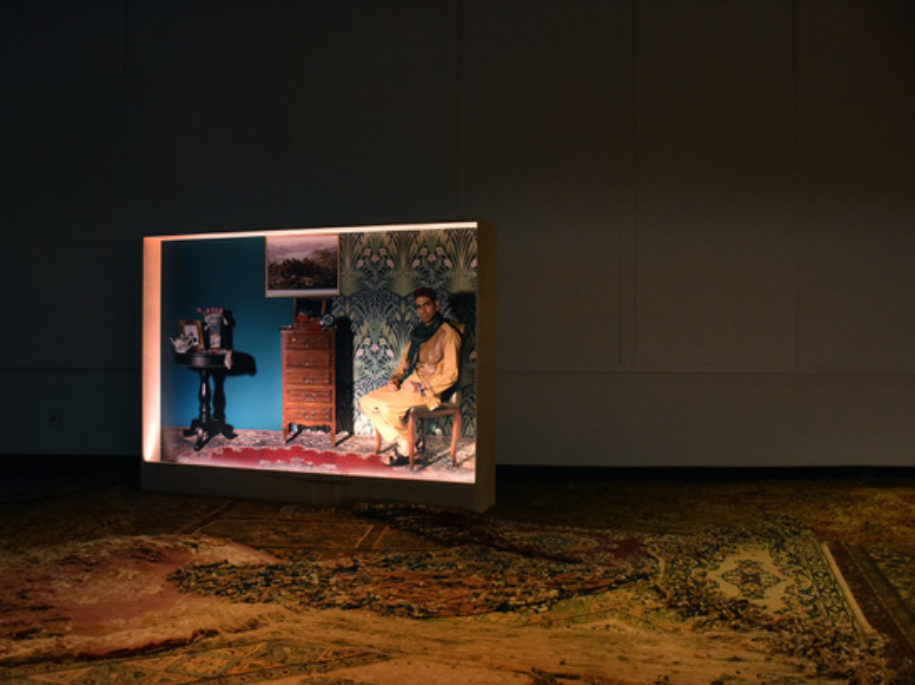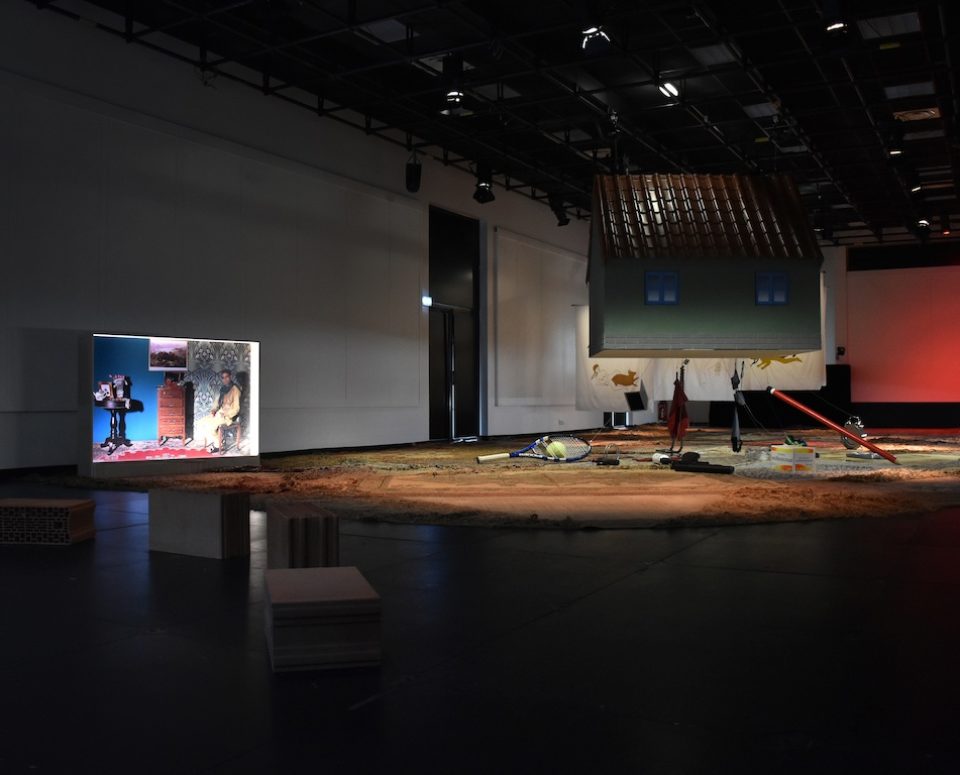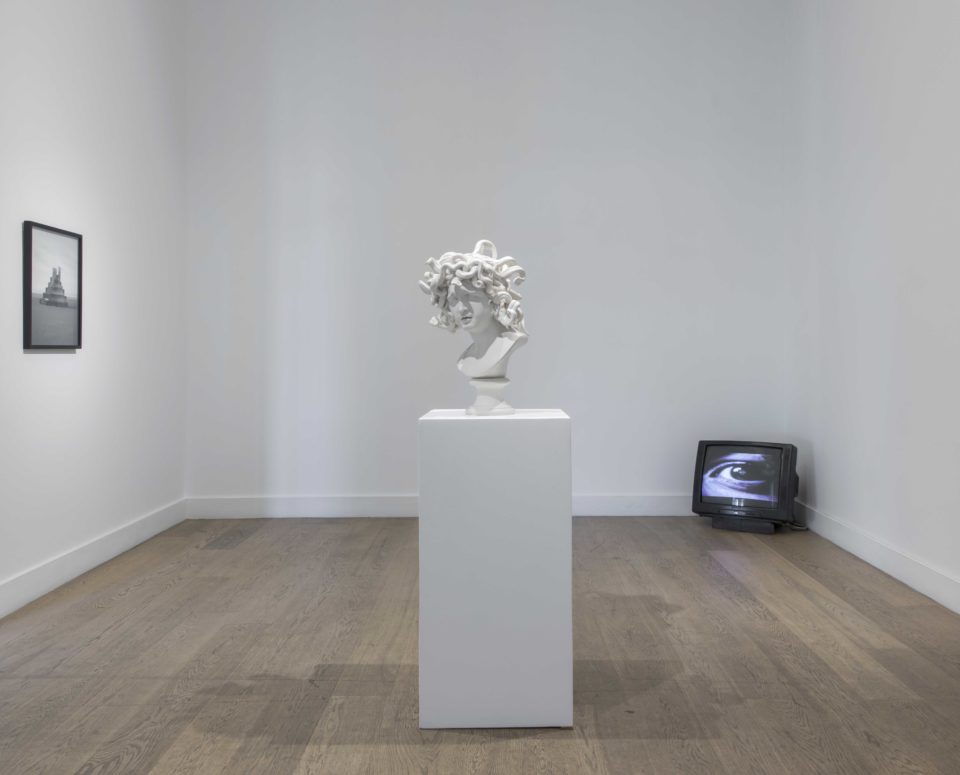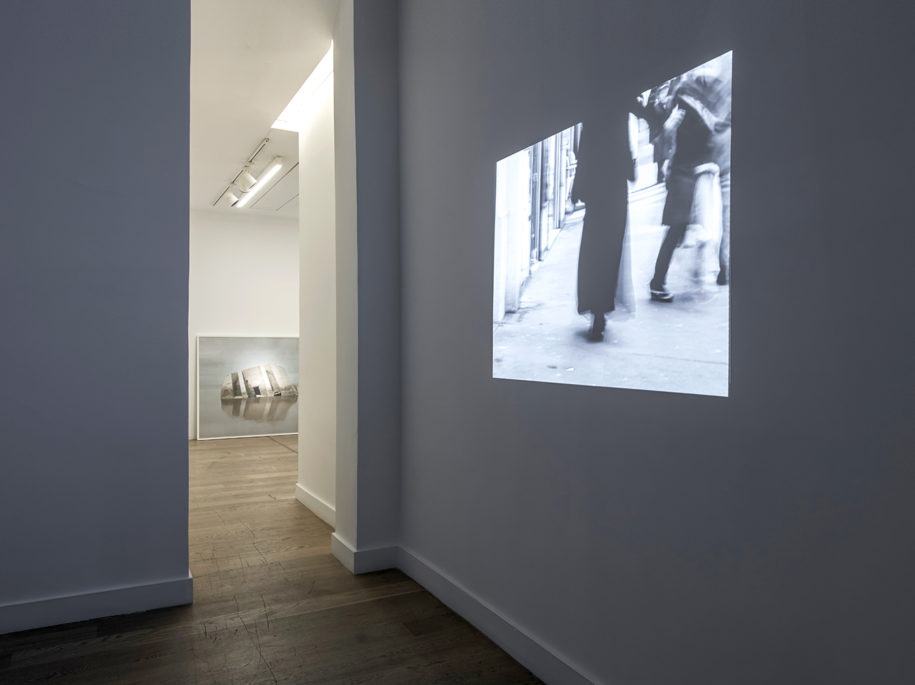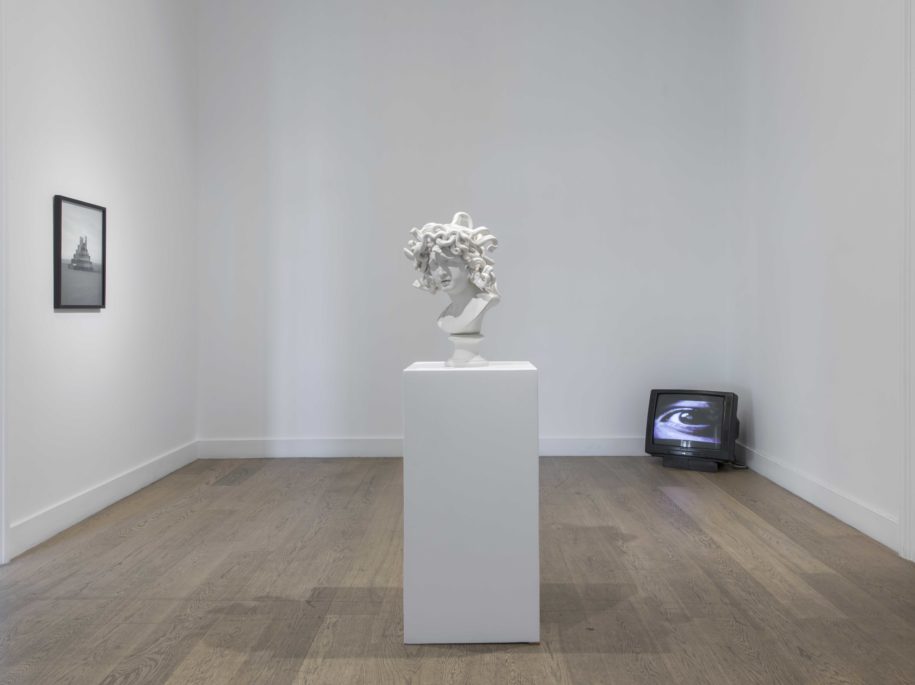« Algérie mon amour » révèle toute la richesse de la production algérienne moderne et contemporaine, tant dans les arts visuels classiques que dans les nouveaux médias. Elle témoigne, à travers un choix d’œuvres représentatives, de la grande créativité de trois générations d’artistes, en dépit des tragédies de l’histoire.
L’exposition recouvre une large période, réunissant des artistes dont le plus ancien, le peintre non figuratif Louis Nallard, est né en 1918, et la benjamine, El Meya, artiste-peintre elle aussi, n’a pas trente-cinq ans.
MÉMOIRE DANS L’OUBLI, 2010 – 2011 ©halidaboughriet
Donation Claude et France Lemand 2018 / Musée de l’Institut du monde arabe
crédit photo : ©arts-in-the-city.com
Halida BOUGHRIET (D’après Emilie Goudal)
De la vidéo à la performance, du podcast radiophonique à la photographie scénographiée, Halida Boughriet s’est engagée dans une œuvre au carrefour de préoccupations esthétique, sociale et politique, assemblant et construisant de nouvelles formes d’écriture en mouvement. En prise directe avec l’état du monde, l’artiste porte une attention particulière aux conflits qui le traversent et à leurs incidences, à l’échelle de la société ou de l’individu. Le corps est omniprésent dans ses œuvres.
Née en 1980 à Lens, diplomée de l’École des Beaux-arts de Paris – formation qu’elle consolide par une expérience new-yorkaise à la School of Visual Arts, section Cinéma -, Halida Boughriet est une artiste de citations, s’inscrivant dans une généalogie richement référencée de l’histoire de l’art occidentale. Elle en déconstruit et détourne la violence sociale et l’assignation visuelle, dans une action performative de (re)définition avec et contre l’image ; une démarche dont le pendant féminin de la série Mémoire dans l’oubli (2010-2011) est l’une des plus sensibles illustrations.
Halida Boughriet prête une attention particulière aux circulations géographiques et temporelles, mais aussi aux anonymes, modèles de tous âges, genres, origines sociales et géographiques, qu’elle invite à une « prise de parole » dans l’espace visuel. Au moyen de la photographie, sa recherche sur les corps peut prendre la forme de portraits (Orphelinat Sarajevo, 2007) ou de séries telles que Dream City (2008, dédiée aux espaces de jeux aménagés pour les enfants dans différentes villes du monde). Ses vidéos expérimentent souvent des dispositifs d’intervention qui viennent perturber une vie urbaine codifiée.
Cette interaction et diffraction entre les lieux de représentation et les corps (tous deux) habités est perceptible dès les premières pièces de l’artiste, avec les portraits d’une jeunesse « militarisée » de Child in America (2005) ou les Murmures (2009), clameurs étouffées des citadins dans le grouillement new-yorkais. Les codes de la représentation visuelle sont retournés, pour faire place aux voix, aux murmures de la ville. Une relation de distance et de proximité du corps au temps et à « soi-même comme un autre » (Ricoeur), palpable dans sa vidéo Corps de masse (2013-2014), où différentes générations de Dyonisiens investissent les espaces compressés des salles du musée d’Art et d’Histoire de Saint-Denis, avant que, des chairs emboîtées, ne se détache un être hybride, qui éclot dans une atmosphère caravagesque.
Les œuvres de Halida Boughriet font partie de la collection du Centre Georges Pompidou, du MAC/VAL (Vitry-sur-Seine), du MAMA (Alger) et du Musée de l’IMA.
Les artistes exposés
- Mohamed AKSOUH 1934
- Mohand AMARA 1952
- BAYA 1931-1998
- Souhila BEL BAHAR 1934
- Abdallah BENANTEUR 1931-2017
- Mahjoub BEN BELLA 1946-2020
- Zoulikha BOUABDELLAH 1977
- Halida BOUGHRIET 1980
- EL MEYA (Benchikh El Fegoun) 1988
- Abdelkader GUERMAZ 1919-1996
- M’hamed ISSIAKHEM 1928-1985
- Mohammed KHADDA 1930-1991
- Rachid KORAICHI 1947
- Denis MARTINEZ 1941
- Choukri MESLI 1931-2017
- Abderrahmane OULD MOHAND 1960
- Louis NALLARD 1918-2016
- Kamel YAHIAOUI 1966
EXPOSITION COLLECTIVE A L’ORÉE DU FOYER, JUSQU’AU 13 MARS 2022, VILLE DE GUYANCOURT
AVEC OUASSILA ARRAS, HALIDA BOUGHRIET, LAURA HABY, KUBRA KHADEMI, JEANNE SUSPLUGAS, MARIANNE VILLIÈRE. MISE EN LUMIÈRE : SERGE DAMON
COMMISSARIAT ÉLISE GIRARDOT
« Nous observons cette maison comme nous observons le ciel, le matin, à peine réveillés ; nous observons cette maison comme notre propre ciel. »
Emanuele Coccia, Philosophie de la maison, Éditions Payot & Rivages, Paris, 2021
À l’orée du foyer se concentre sur l’intérieur : l’intérieur profond et mystérieux de nos habitats et l’intimité qui s’y déploie.
Chacun conçoit son lieu de vie à son image en y projetant sa vision du monde, variable selon le pays et le continent habité. L’expositionaborde le chez-soi dans ses définitions multiples : un lieu à la fois matériel et immatériel, quotidien, solitaire, joyeux ou tragique, parfois collectif et sujet aux retrouvailles. À travers les œuvres de six artistes d’origines diverses, nous verrons comment l’espace domestique est l’expansion d’un espace mental, un espace-temps à soi.
Dans une forme d’immersion, les visiteurs arpentent des propositions artistiques qui suggèrent des sensations proches et familières. Suspendues ou disposées près du sol, les œuvres nous accueillent dans une atmosphère lumineuse enveloppante et tamisée, aux directions changeantes.
Plusieurs récits se côtoient, reliés par l’installation de Ouassila Arras qui recouvre d’une multitude de tapis orientaux le sol de la Salle d’exposition. Photos de famille est le fil conducteur du parcours. L’œuvre incarne un objet familier qui nous rassemble : le tapis. Comme un signe, une ponctuation universelle, nous le retrouvons plusieurs fois, parsemant les œuvres des artistes.
Au cœur de l’exposition, une grande maison, Flying House de Jeanne Susplugas, dévoile le poids des objets qui emplissent nos intérieurs. Puis, la présence s’anime ; The Birth Giving de l’artiste afghane Kubra Khademi souligne ce qui intervient parfois dans les espaces intimes : la naissance, les traditions et les interdits.
Ailleurs, le travail sonore de Marianne Villière, intitulé Réalités désirées, découle de ses rencontres avec de jeunes habitantes des Yvelines dans le cadre de sa résidence artistique à Guyancourt. Elle leur donne la parole et insère leurs voix dans l’exposition.
On observe aussi des mises en scène, comme avec la photographie d’Halida Boughriet Le bijoutier afghan qui dresse le portrait d’Ismaîl installé dans un décor chargé de réminiscences historiques.
Enfin, on décrypte des scènes collectives ouvrant sur un horizon. Muhabet, le diptyque vidéo de Laura Haby évoque une forme de conversation ritualisée ; depuis bientôt quatre ans, l’artiste voyage au nord de l’Albanie dans un village enclavé qui connaîtra bientôt les bouleversements de la construction d’une route.
Ces manifestations de l’intime révèlent un échantillon de nos relations aux objets et aux personnes qui nous entourent. Les œuvres nous invitent à appréhender le chez-soi comme un paysage, un paysage énigmatique, jamais banal qui dévoile les nuances de nos habitudes et de nos caractères.
Notre foyer est un réservoir narratif : il raconte nos singularités.
Élise Girardot, janvier 2022
Crédits photos : Laura Haby

